Transforming Words into Wealth: 10 copywriting hacks for the best conversion
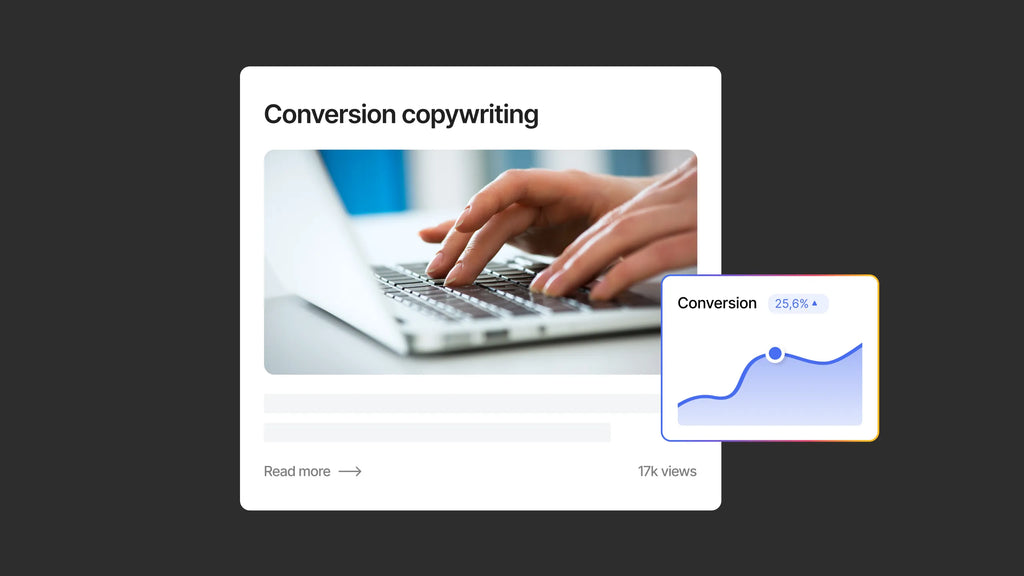
In the eCommerce world, conversion copy serves as a powerful salesman. Along the sales pipeline that converts potential customers into leads, every word matters. By incorporating conversion copywriting techniques, your words can evoke emotions, trigger needs, and navigate visitors closer to the deal.
And for that "conversion", your copy doesn't need to be fancy but powerful enough to drive action.
The secret is: There are always tried-and-true conversion copywriting formulas grounded in consumer psychology. Without much further ado, we will guide you through the art and science behind a copy that converts, plus the best actionable examples to steal.
Let’s jump right in!
What is conversion copywriting?
You write copy daily, from landing pages, blog posts, social posts, email campaigns, advertisements, etc. But not all of this stuff is conversion content.
Conversion copy is a specialized writing form that persuades customers to take specific actions, like adding items to their shopping cart, subscribing to a page, channel, or newsletter, making a phone call, or filling out an online form.
To drive actions, copy that converts is commonly strategically placed on websites, landing pages, sales pages, email campaigns, advertisements, etc.
Why copywriting is crucial for converting
- Create an emotional connection: Copywriting has the power to evoke emotions and connect with the audience on a deeper level. By understanding the audience's desires, aspirations, and pain points, persuasive copy can tap into their emotions, making them more receptive to the message and more likely to take action.
- Drive action: Copywriting includes strategically placed CTAs that guide the audience towards the desired action. Well-crafted CTA in copywriting hacks to boost website conversion and motivates the audience to take immediate action.
- Communicate the value proposition: Effective copywriting clearly communicates the unique value and benefits of a product, service, or offer. It highlights how the offering solves a problem or fulfills a need, making it compelling to the audience.
- Build trust and credibility: By addressing their concern and providing evidence and solutions, conversion copy helps overcome skepticism and encourages the audience to trust the brand or offer.
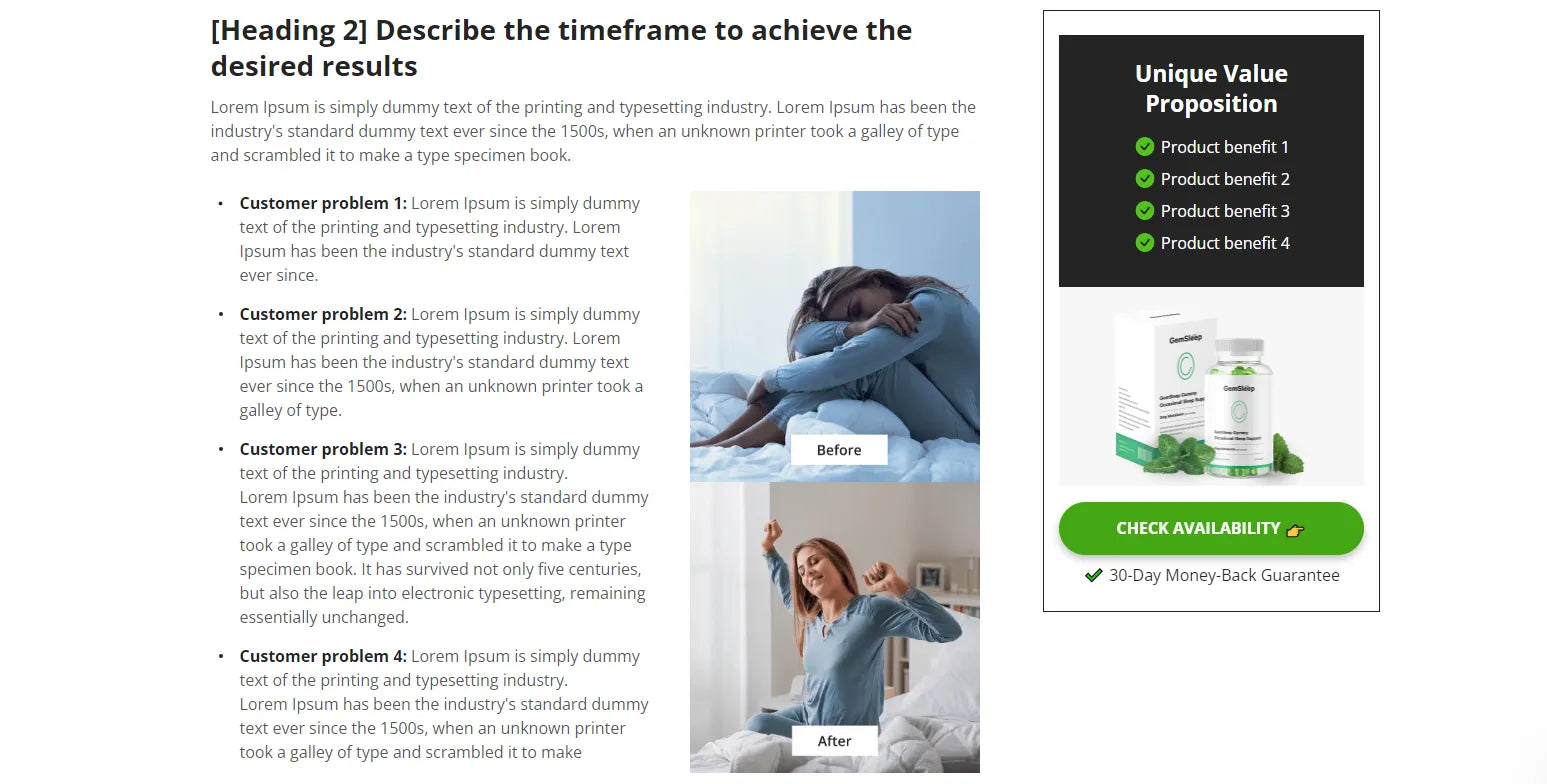
Learn more: Master SEO Optimization with Your Shopify Blog: A 2024 Guide

10 best copywriting formulas (+ examples) to steal
1. Use flash sales and promotions
Flash sales and promotions never fail to trigger demands. You can easily spot this kind of conversion copywriting method in pop-ups that appear when you visit an eCommerce store for the first time.
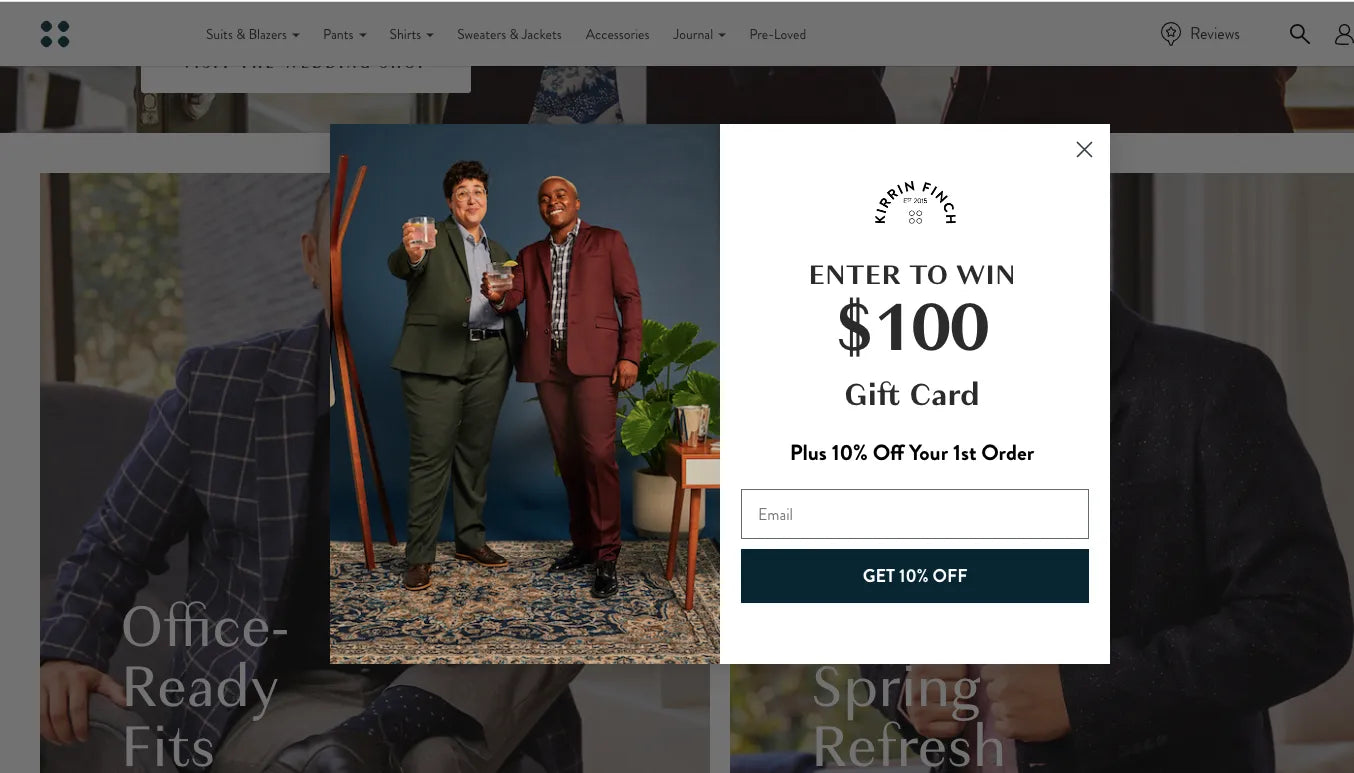
A discount popup appears when you visit Kirrinfinch’s homepage for the first time.
By emphasizing the value or savings, it triggers the desired emotional responses, and prompts customers to make a decision quickly. Clear and concise calls-to-action should be included, guiding customers on how to take advantage of the offer.
Note: Not only copy, but a killer design can probably sell. For Shopify store owners, we recommend using a leading Shopify page builder, GemPages, to create a popup, sales page copy template, or any other component of your online store. Seamless and high-converting - that’s all we need when building a business hub.
Learn more: The Best Website Popup Examples that Help You Drive Conversion (2024)
2. Exclusive or VIP access
Humans are naturally drawn to things that are exclusive and limited to a select group. By offering exclusive or VIP access, you create a sense of privilege and special treatment for your customers. This conversion copy can cultivate a strong desire to be part of the exclusive group, as people want to experience the special benefits and status.
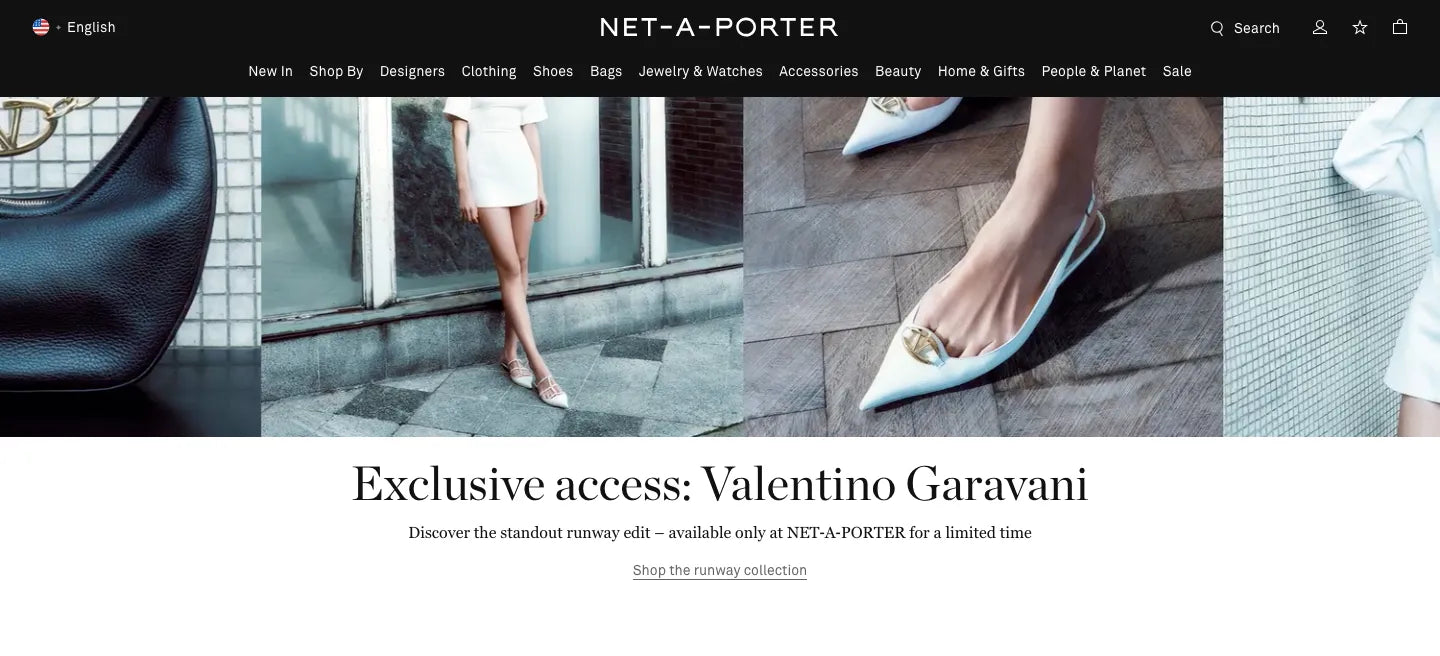
Net a porter offers exclusive access that entices customers to further discover their collection.
3. Use Scarcity
Creating a sense of scarcity is one of the powerful psychology-based copywriting principles. It taps into the innate human belief that there is never enough time, resources, opportunities, etc. The fear that the limited opportunities will be gone soon drives us to make quick decisions to not miss out on something.
Here are some ways to incorporate scarcity into your copy:
- Limited-time offers: Highlight that your offer is available for a limited time only.
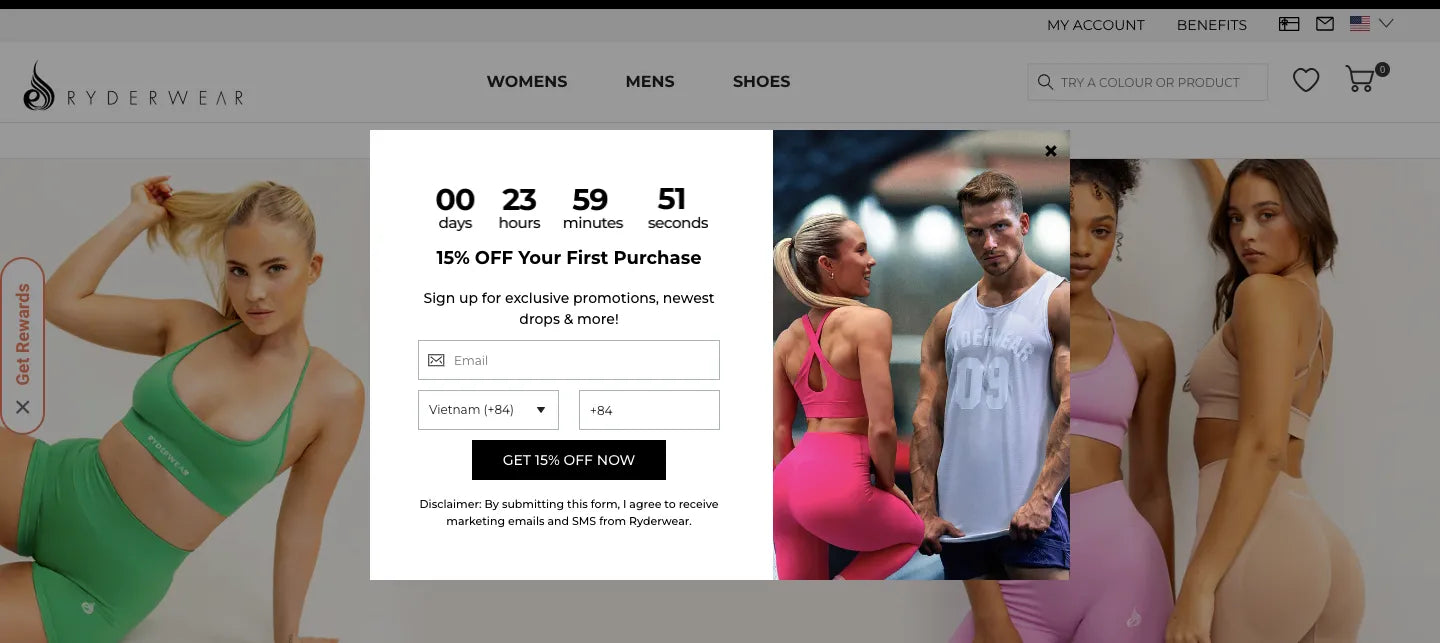
Ryderwear creates a sense of scarcity in their copy, using a countdown timer
Ryderwear successfully adds the scarcity to their conversion copy. You’ll notice that there are classic elements that never fail to ramp up the scarcity in your offer, such as a specific time frame or countdown, urgent words (exclusive promotions, newest drops, etc.), and strong CTAs (Get 15% off now).
- Limited stock: Mention the remaining stock or the number of spots left to create a sense of urgency and scarcity.
Example: "Hurry! Only 5 spots left for our upcoming workshop. Secure your spot now before it's fully booked!”
- Bonuses or limited-time extras: Provide additional incentives or bonuses for a limited period. Communicate that these extras are only available for a short time, encouraging readers to take advantage of the offer before it expires.
Example: "Order now and receive a bonus e-book with exclusive tips and tricks. This bonus is only available for the next 48 hours!"
Though creating a sense of scarcity is surely beneficial, it may also backfire if you fail to follow these notes.
- Ensure that the scarcity you create is genuine and transparent. If not, this tactic can harm your brand reputation.
- Integrate other marketing tools to create a stronger sense of urgency, like sending an email that lets your customers know how much time they have left on an exclusive offer.
4. Evoke desire (by listing benefits)
Customers are unable to physically interact with your product through online offers. Let your copy help them feel connected to it. Make your customers envision themselves using the product and how much easier and more enjoyable their lives could be with your solutions.
Copy that evokes desire typically highlights the Unique Selling Proposition (USPs), benefits and positive outcomes that the product or service can provide. It emphasizes how the offering can solve a problem, fulfill a need, or improve the customer's life.
Pro tips: Don’t make it a dull list of benefits that visitors will probably neglect. Instead of listing what you have, show customers what they can get. And to boost a stronger desire, utilize sensory words or storytelling techniques to evoke emotions and imagery.

The description of the Surf Ceramic Candle evokes images of customers.
See how Tofinosoap, a brand of organic home and body products, connects with their customers on a deep level.
Instead of listing product features like "natural”, “reusable”, “plastic free”, the brand pictures the feeling of sinking into peaceful and rejuvenating vacation vibes with their candles. The copy emphasizes the emotional benefits that evoke the customers' desires for comfort, freshness, and peace of mind. This approach allows them to create a stronger emotional resonance.
5. Present the consequences of failing to act
Positive results can motivate desired actions, but negative outcomes also work. The fear of potential negative results pushes customers to take immediate action to avoid unwanted consequences. Harnessing negative emotions for your copy, such as fear, frustration, or regret, can also be a powerful driver for action.
The beauty and wealth industries often utilize this copywriting technique to creat a sense of desire. Here’s a conversion copy that incorporates “the fear” element:
Note: It's important to strike a balance when presenting consequences. The copy that converts should focus on motivating the audience to take action rather than instilling fear or negative emotions.

6. Empathize with customers’ pain points
When customers see their pain points reflected in the copy, it triggers their problem-solving mindset. They become more receptive to potential solutions and actively seek ways to address their challenges. By presenting your product or service as the solution to their pain points, you position yourself as the answer they have been searching for.
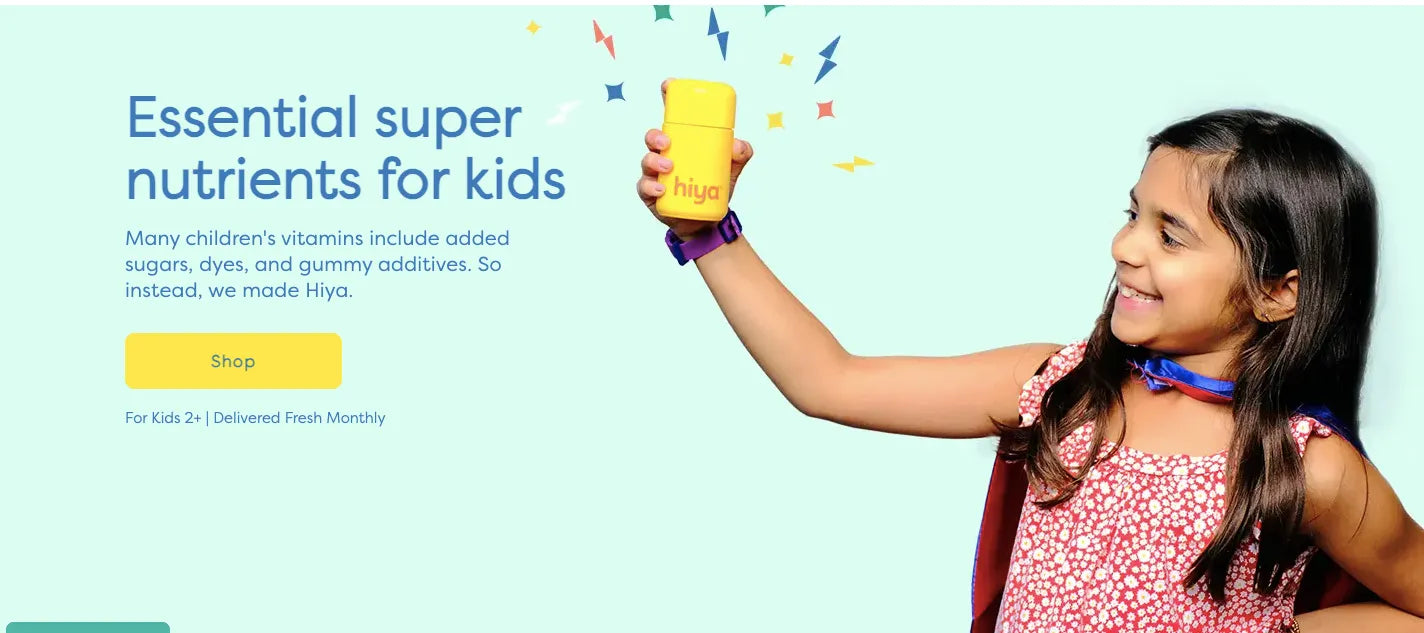
Hiyahealth's conversion copy entices visitors by raising their pain points.
We really like this Hyan copy since it is short but really hits those who arrive on the page. In a sentence, the copy raises the fact that many children's vitamins on the market contain added sugars, dyes, and gummy additives. This approach resonates with parents who are seeking a healthier and cleaner option for their children's vitamins and implies that Hiya is different from other children's vitamins.
7. Persuade with social proof
Using social proof is one of the most effective conversion copywriting principles. The experiences and opinions of others can build trust, alleviate doubts, and persuade customers to take action.
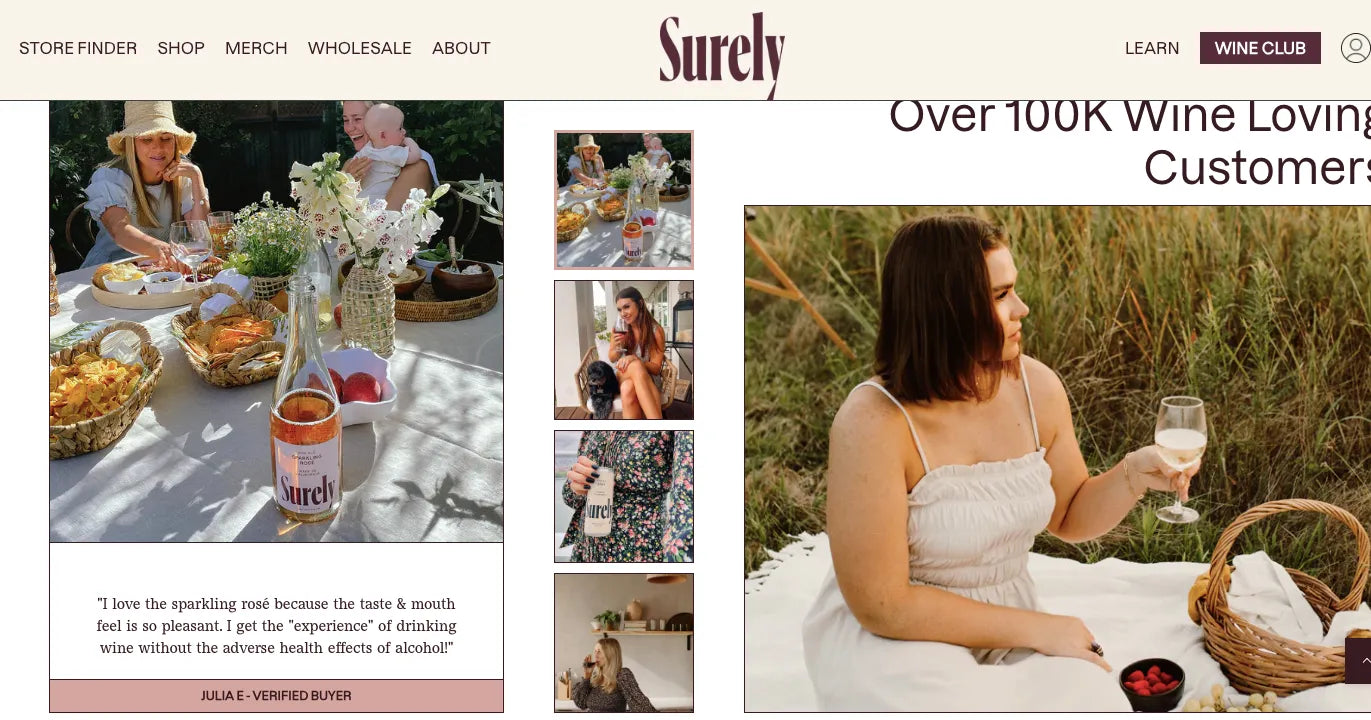
In this copy, customers help Surelywine speak out. The statement "Over 100K Wine Loving Customers" highlights that the brand is popular and trusted by a significant number of customers, increasing its credibility and trustworthiness.
The testimonials do an excellent job as they include valuable comments, and add pictures showing customers enjoying wine. Real-life representations of people enjoying the product can create a more relatable and aspirational connection for potential customers.
Learn more: Shopify SEO Checklist for Beginners (2023)
8. AIDA
AIDA is the cream of the crop when it comes to conversion copywriting, standing for Attention, Interest, Desire, and Action. This formula can be highly effective in capturing attention, engaging your audience, building desire, and driving conversions.
Here's a breakdown of each element in the AIDA formula:
- Attention: Grab the attention of your audience with a compelling headline, tagline, or opening statement.
- Interest: Once you have their attention, generate interest by providing information, features, or benefits about your product or service.
- Desire: Build desire by appealing to your customers' emotions and showing them how your product or service can improve their lives or fulfill their desires.
- Action: Clearly state what you want them to do, such as making a purchase, signing up, or contacting you.
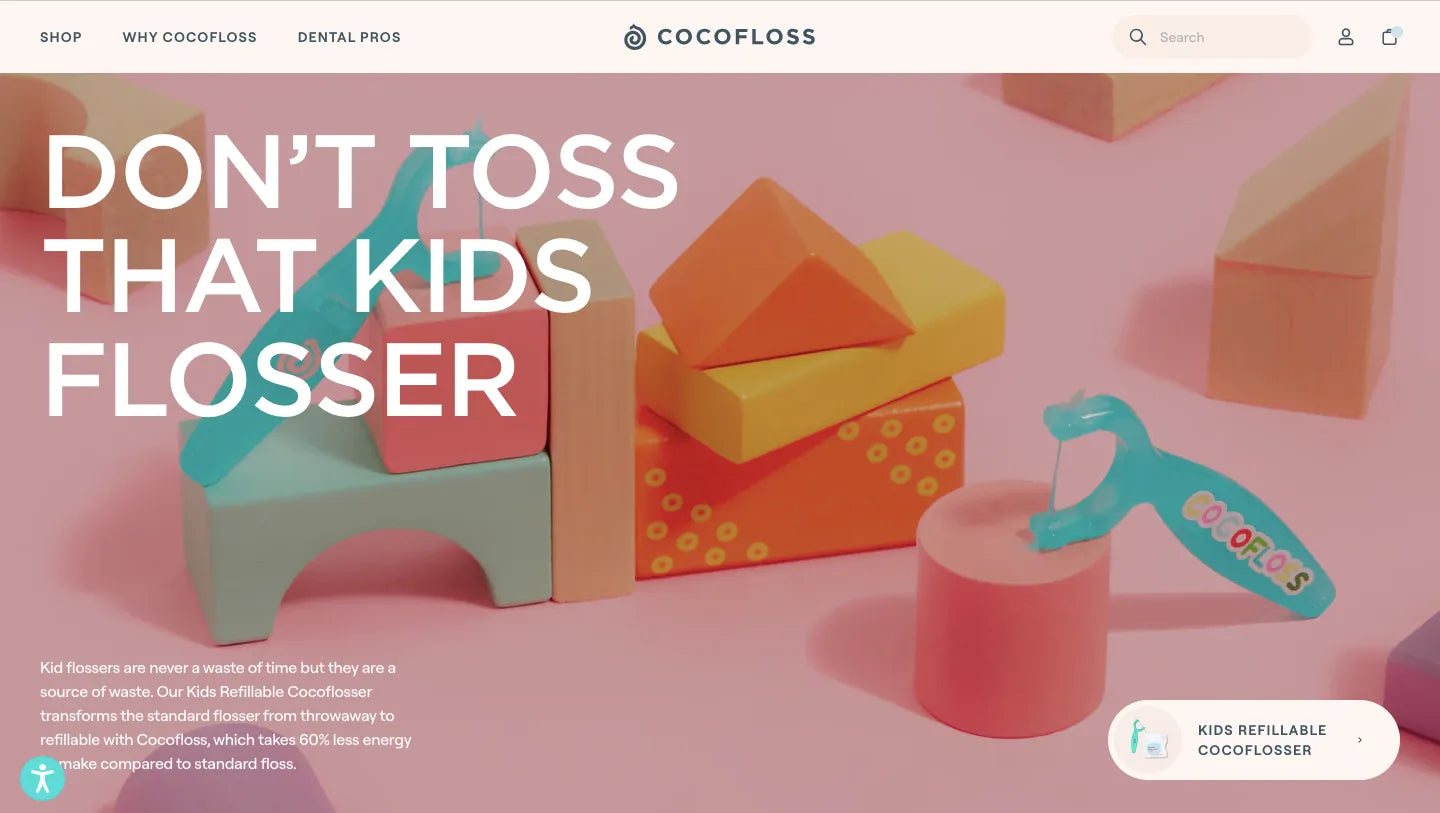
Cocofloss uses the AIDA framework in their conversion copy.A conversion copy on the Cocofloss website.
Let's break down how AIDA is applied to Cocofloss’ copy on their website:
- Attention: The statement "DON’T TOSS THAT KIDS FLOSSER" immediately grabs attention by using capital letters and creating a sense of urgency. It prompts the reader to pay attention to the message.
- Interest: The mention of transforming the flosser from throwaway to refillable with Cocofloss creates curiosity and engagement. It highlights an environmental concern and suggests a solution.
- Desire: The copy builds desire by emphasizing the benefits of the Kids Refillable Cocoflosser. It mentions that using this product reduces waste, which appeals to environmentally conscious individuals.
- Action: The CTA button suggests switching to the Kids Refillable Cocoflosser.
Pro tip: Build your sales funnel first! It helps you define the way to do business and keeps you going straight ahead.
9. Try the Inverted Pyramid method
The Inverted Pyramid method presents the most important information first, followed by supporting details and background information in descending order of importance.
It begins with an engaging lead that immediately captures the reader's attention and keeps them hooked. Then, readers will be guided towards the desired action through some sentences that reinforce the key message.
In this conversion copy, the Inverted Pyramid method is applied by starting with an attention-grabbing headline that highlights the main message and the Archer & Olive Subscription Box's value position: "Creativity delivered to your door."

The subsequent sentences add depth and specificity to the offering, enticing the reader with the promise of high-quality products and a delightful experience with the Archer & Olive. Then the final part of the copy emphasizes the benefits and possibilities of the subscription box, suggesting that it can bring delight, whimsy, and a dose of self-care to the reader's day.
By structuring the content in this way, the Inverted Pyramid method creates desire for the Archer & Olive Subscription Box.
Learn more: How to Start a Shopify Subscription Box Business in 5 Easy Steps
10. Use 4 Ps (Promise - Picture - Proof - Push)
The 4 Ps framework includes 4 components, which are Promise, Picture, Proof and Push. Here’s why this technique works:
The Promise, the foundation of your conversion copy, delivers the core value proposition or the main benefit that you offer to your target audience. It should be a clear and compelling statement that addresses a specific pain point or desire.
The Picture part evokes the readers' imagination, or, in other words, helps the readers visualize the desired outcome or experience and create a sense of connection.
The Proof provides evidence and credibility to support your Promise. It includes testimonials, case studies, statistics, or any other form of social proof.
And The Push, commonly known as the call-to-action (CTA), encourages the reader to take the desired action.
Pro tip: By arranging “The Push” in a reasonable way, It can help you convert your potential leads into paying customers and grow your revenue and profits with a systematic approach. Try GemPages to build your click funnel.
Now let's look at why you'll probably enjoy this copy in Mattscookies website even if you're unaware that it uses The 4Ps formula.

The Promise in this copy is the claim that their cookie will be exceptionally delicious and satisfying.
The Picture is then created through the description of the cookie as soft and chewy. The mention of "tons of real, rich semisweet chocolate chips" immediately creates an enticing image in the customers' minds, allowing them to visualize the cookie's texture and flavor.
The Proof mentions that the same high-quality, natural ingredients have been used for over 40 years. This proof is really "the million- dollar" word, as it implies that the cookie has a long-standing reputation and a loyal customer base.
The Push is subtly implied in the statement: "One bite into these soft and chewy cookies, and you will know why they're known for being ridiculously good." This encourages the reader to take action.
One more thing we love about this conversion copy is that it subtly incorporates sensory words that create a vivid picture of the cookie's texture and taste, making their cookie irresistible in the readers' imagination.

4 rules for writing a high-converting copy
-
Understand your audiences
To create compelling copy, it's crucial to have a deep understanding of your target audience. Research their demographics, interests, pain points, and motivations, then tailor your messaging to resonate with their needs and desires, addressing their specific challenges and offering solutions.
Learn more: How to Sell Personalized Items on Shopify
-
Keep it concise and clear
Write in a concise and clear manner to grab and maintain the reader's attention. Avoid unnecessary jargon or complex language. Use short sentences and paragraphs to convey your message effectively.
-
Useful CTAs
Include compelling calls-to-action (CTAs) that encourage immediate action. Use strong, action-oriented language to guide the reader towards the desired conversion, whether it's making a purchase, signing up for a newsletter, or taking any other desired action.
Try this out: Effective Tips to Create Call to Action Buttons that Convert
-
Make it skimmable
Organize your content for easy reading and understanding. Utilize subheadings, bullet points, and bold formatting to emphasize important details. Consider breaking up the content into shorter paragraphs and adding visuals like images or infographics to make it more engaging and easier to read.
Tips: Discover rich and high-converting templates from GemPages to ignite your idea for your online business.
Learn more: How to Promote Shopify Store: 15 Solid Strategies + Inspiring Examples [2024]
Key takeaways
Mastering the art of conversion copywriting is essential to boosting your online sales and driving conversions. The killer techniques in this blog post can be a great inspiration for you to create compelling and persuasive copy that resonates with your target audience, captures their attention, and motivates them to take action.
And don't forget to test and analyze the performance of your copy and make data-driven decisions to optimize your conversion rates further.
By employing these killer conversion copywriting techniques, you can effectively engage your audience, increase sales, and propel your Shopify online store to new heights of success.




 Facebook Community
Facebook Community Change Log
Change Log Help Center
Help Center









